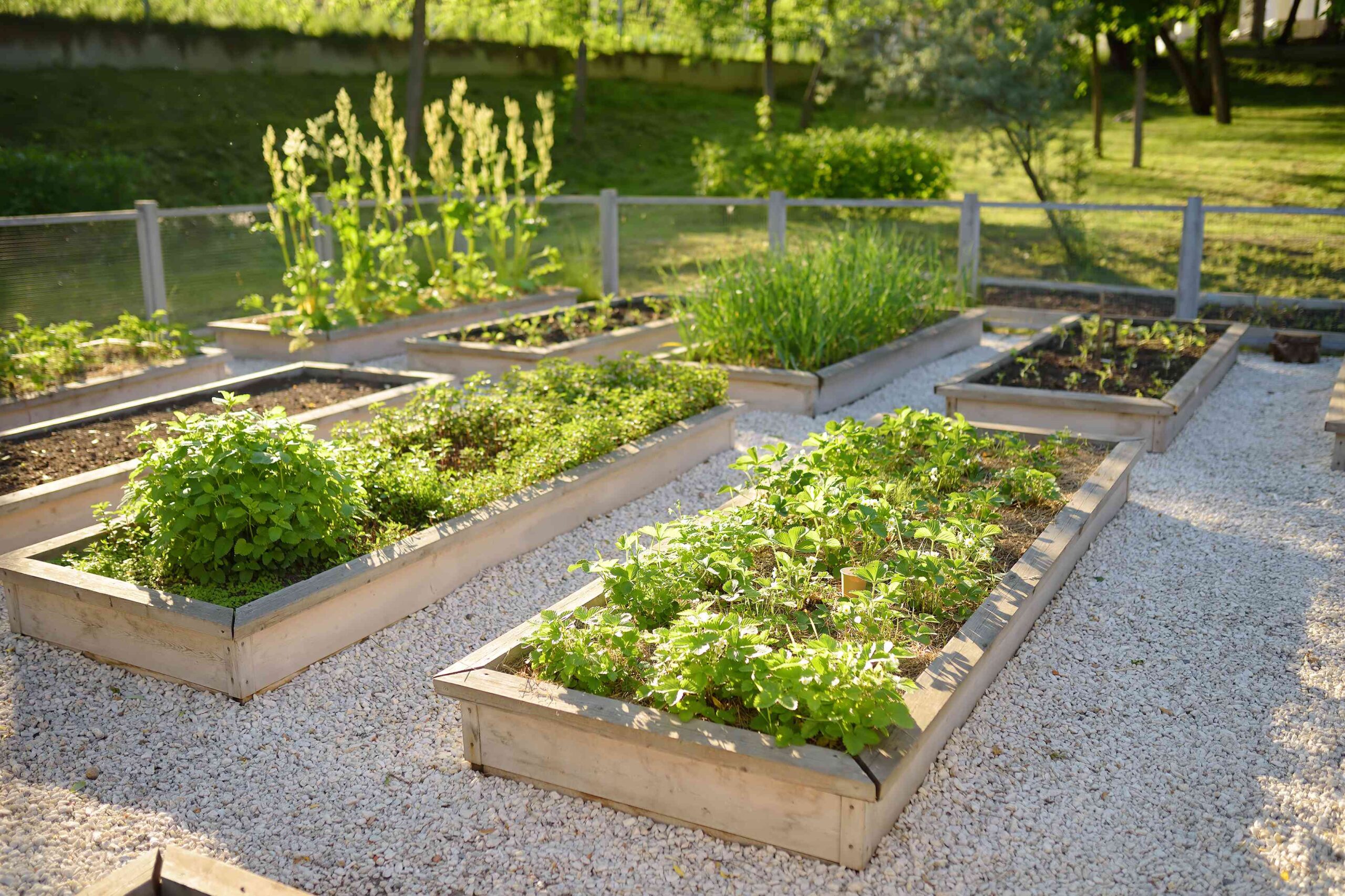
The 10 Best Companion Plants To Pair With Beans
Beans are among the easiest crops to produce in the home garden, performing well in traditional garden beds, raised planting beds, and even containers. Pairing beans with companion plants enhances plant health and can boost yields through pest reduction and weed management. Bean plants themselves enhance soil nutrition, benefiting its partners in return. The bean companion plantings featured here are based on scientific research.
Companion plants provide a range of services to their partners. Some deter pests through chemical compounds in their foliage, while others enhance the growing environment by shading the soil to reduce moisture loss or reducing weed growth. Many companion plants are used to attract pollinators and other beneficial insects to the garden. All these services promote a healthier, more productive growing environment for beans.
When selecting companion plants to grow alongside beans, consider the pest challenges you commonly face in the garden and match these to the most important services offered by companion plants. Also consider adding flowering resources to attract beneficial insects to reduce pest pressure. Some plants do not perform well with beans, including onions, garlic, gladiolus, and fennel. Keep these in isolated areas of the garden. Finally, remember to harvest beans regularly to keep plants productive.
The Three Sisters Garden
The best-known example of companion planting is the Three Sisters Garden employed by Native Americans for thousands of years. This trio combines corn, pole beans, and squash or pumpkins. Corn plants provide physical support for the climbing vines of pole beans, which in return fix atmospheric nitrogen in the soil to the benefit of its partners. The rambling squash vines cover the soil, serving as a living mulch to manage weeds and conserve soil moisture.
Corn
Getty Images
- Botanical Name: Zea mays
- Sun Exposure: Full Sun
- Soil Type: Moist, Well-draining, Fertile
- Soil pH: Acidic to Neutral (5.8-7.0)
In the traditional Three Sisters Garden, field corn was used as the central crop. Home gardeners can substitute sweet corn, although it doesn’t grow as tall as field corn. Look for taller varieties and avoid dwarfs. Give the corn a head start of several weeks, sowing the beans once the corn has reached a height of 4 to 6 inches. This ensures the corn plants are well established when the beans begin to climb. Corn is a heavy feeder and will benefit from nitrogen fixed in the soil by bean plants.
Squash
Getty Images
- Botanical Name: Cucurbita spp.
- Sun Exposure: Full Sun
- Soil Type: Moist, Well-draining, Fertile
- Soil pH: Acidic to Neutral (5.8-7.0)
The genus Cucurbita includes summer and winter squash, pumpkins, zucchini, and ornamental gourds. In the Three Sisters Garden, winter squashes and pumpkins are traditionally used, as these crops can be stored long term or dried for winter use. Gardeners like to experiment with different squash relatives in this combination, including melons. In addition to serving as a living mulch, the spiny hairs on squash leaves are thought to deter raccoons from stealing your sweet corn.
Bean Companion Plants To Attract Beneficial Insects
A great diversity of insect life can be found in a healthy, thriving garden. These include pollinators as well as predators and parasitoids that feed on garden pests. Parasitoids are specialized types of predatory insects that include non-stinging wasps, flies, and other insects. Common insect predators in the home garden include lacewings, syrphid (flower or hover) flies, minute pirate bugs, ground beetles, and ladybeetles. In addition to feeding on pests, many predatory insects and parasitoids feed on nectar or pollen for part of their life cycle. You can attract these beneficial insects to enhance natural pest control by planting flowers and flowering herbs throughout the garden.
Dill
Getty Images / Nicholas Kostin
- Botanical Name: Anethum graveolens
- Sun Exposure: Full Sun to Part Shade
- Soil Type: Moist, Well-draining, Fertile
- Soil pH: Acidic to Neutral (5.5-7.5)
Dill flowerheads consist of thousands of tiny flowers arranged in an umbrella-shaped inflorescence called an umbel. The flowers are sized just right to support a great diversity of insects with small mouthparts, including syrphids, parasitoid wasps, lacewings, and ladybeetles. These insects all feed on aphids, a common pest of beans. Planting dill among edible plants has been shown to reduce aphid damage in a wide range of crops.
Cilantro
Adrian Crook/Getty Images
- Botanical Name: Coriandrum sativum
- Sun Exposure: Full Sun to Part Shade
- Soil Type: Moist, Well-draining, Fertile
- Soil pH: Slightly Acidic (6.2-6.8)
Cilantro is a relative of dill—they both belong to the carrot family (Apiaceae)—and produces similar umbel-type flowerheads. In addition to attracting predators of aphids, cilantro (and dill) support parotoids, including non-stinging wasps and tachinid flies, which attack caterpillar pests of beans such as corn earworm.
Sweet Alyssum
Getty Images
- Botanical Name: Lobularia maritima
- Sun Exposure: Full Sun to Part Shade
- Soil Type: Medium to Moist, Well-Drained, Average Fertility
- Soil pH: Acidic to Neutral (5.5-7.0)
Sweet alyssum is a wonderful flower for attracting beneficial insects and adding a touch of beauty to vegetable plantings. The numerous small white flowers attract syrphid flies (a.k.a. hover or flower flies), ladybeetles, and parasitic wasps, all of which prey upon aphids. Sweet alyssum flowers spring through fall, attracting beneficial insects all season long. Plants benefit from afternoon shade in warm Southern climates. Plant as a groundcover beneath beans and other plants that will provide the necessary shade.
Bean Companion Plants To Deter Pests
While some companion plants attract beneficial insects to control pests, others directly impact the behavior of pests. Companion plants with strong odors can confuse pests or mask the scent of crops, making it difficult for pests to find them. The aroma of other plants repels insect and disease pests. Interplanting these crops among beans can help reduce pest pressure.
Rosemary
Getty Images
- Botanical Name: Salvia rosmarinus
- Sun Exposure: Full Sun
- Soil Type: Dry to Medium, Well-draining, Low to Average Fertility
- Soil pH: Acidic (5.8-6.8)
Mexican bean beetles treat bean plants like an all you can eat buffet. These small beetles are sometimes confused with ladybeetles (which feed on bean beetle eggs), thanks to their similar shape and black spots. The aromatic compounds in rosemary are known to deter Mexican bean beetles and other garden pests. It is a great plant to mingle among susceptible crops.
Summer Savory
Getty Images
- Botanical Name: Satureja hortensis
- Sun Exposure: Full Sun
- Soil Type: Dry to Medium, Well-draining, Fertile
- Soil pH: Neutral to Alkaline (7.0-8.5)
Summer savory is a culinary herb with many uses, including pest management. Small white to pink flowers are produced in showy clusters that attract honeybees and other pollinators to the garden. As a companion plant, summer savory is used to repel bean beetles. Planting summer savory alongside beans is thought to improve the flavor of beans. Interestingly, these tow plants also pair well in cooking.
Winter Wheat or Winter Rye
Getty Images
- Botanical Name: Triticum aestivum (wheat) and Secale cereale (rye)
- Sun Exposure: Full Sun
- Soil Type: Dry to Medium, Well-draining
- Soil pH: Acidic to Neutral (5.6-7.0)
Studies have shown that growing beans following a winter cover crop winter wheat or winter rye reduces the incidence of bean root rot, a disease caused by the fungal pathogen Rhizoctonia. These cover crops are planted in the fall prior to growing beans and cut down just prior to sowing bean seeds. The residues can be left on the soil surface to serve as mulch. In addition to aiding in disease management, winter wheat and rye are great soil builders.
Plants That Benefit From Being Planted With Beans
With the help of bacteria that grow in nodules on their roots, bean plants and their relatives enrich the soil by fixing nitrogen from the air into a form usable by plants. This reduces your fertilizer needs and supports plant growth. Low-growing leguminous plants like clovers are commonly used as a living mulch beneath taller crops, but garden beans are also known to benefit their neighbors. The nitrogen fixed by legumes is not readily available until the bean or pea crop dies and therefore benefits the crop planted after beans or peas. They are commonly paired with heavy feeders like corn and brassicas as a means of replenishing soils.
Potato
Getty Images
- Botanical Name: Solanum tuberosum
- Sun Exposure: Full Sun
- Soil Type: Sandy, Well-draining, Fertile
- Soil pH: Acidic to Neutral (5.5-7.0)
Studies have shown that interplanting potato plants with beans increased potato tuber size. To achieve this effect, alternate rows of potatoes and beans in the garden, or intersperse beans within blocks of potatoes. Plant out the seed potatoes a few weeks prior to sowing bean seeds. Note that these crops are grown simultaneously. The affect is not delayed until after bean plants are removed as in other pairings.
Cucumbers
Getty Images / Dmytro Skrypnykov
- Botanical Name: Cucumis sativus
- Sun Exposure: Full Sun
- Soil Type: Medium to Moist, Well-draining, Fertile
- Soil pH: Acidic to Neutral (5.8-7.0)
Pairing beans and cucumbers is an extension of the Three Sisters Garden. While these crops can be grown together, the greatest benefit will be achieved when cucumbers are planted after beans. Consider a summer planting of beans to enrich the soil, followed by a fall planting of cucumbers, heavy feeders that will benefit from nitrogen-rich soil.










